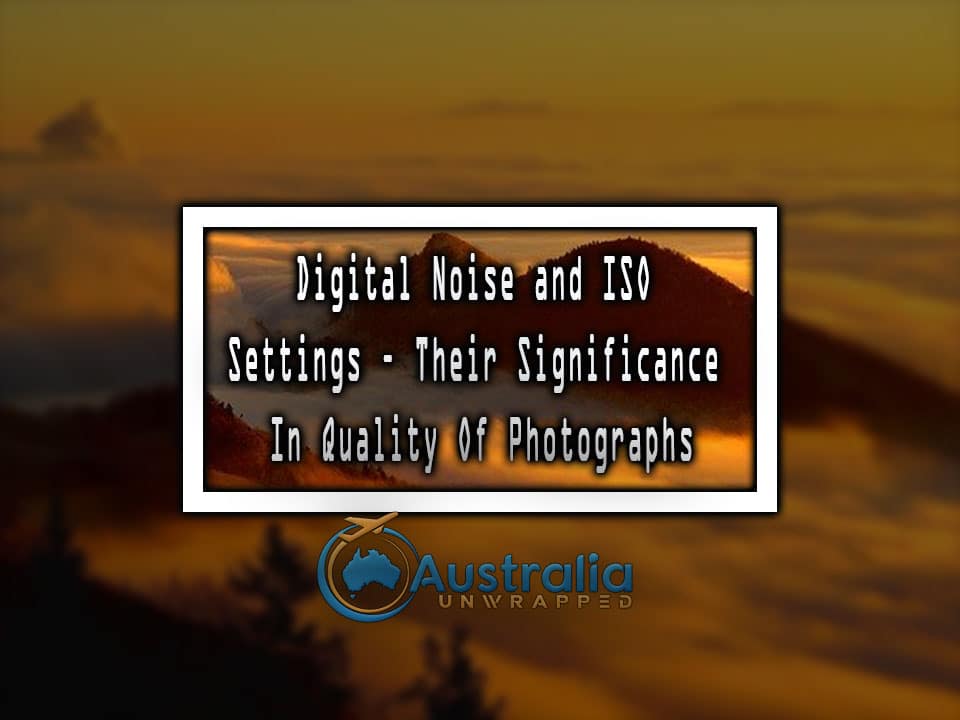Their Significance In Quality Of Photographs
Digital Noise in digital photography is equivalent to film grain and has an undesirable effect on the quality of photographs. It is visible as small blotches of color normally in the less bright part of the image. Noise may not be clearly visible in snapshots but gets quiet distinguished when enlargements of the snaps are done. Photos taken in low light have greater impact of noise. Basically quality digital camera inherently produces less noise.
There are two sources of digital noise. The first one is due to sensor of the camera. The heat buildup on the chip used in sensor is due to long exposures. The second one is the ISO settings done on camera. The increase in ISO rating increases digital noise. ISO settings refer to speed of the film in the camera. ISO is the sensitivity of image sensor to light. ISO will be discussed in detail in later part.
Coming back to digital noise, Digital Single Lens Reflex (DSLR) camera is better equipped as compared to consumer digital camera, the reason behind that is larger size of image sensor. The photosites in the bigger sensor are having more space between them that prevents leakage of signal from one photosite to another that ultimately results into no noise. Now the question is can’t consumer digital cameras have noise reduction using larger image sensors? The answer is NO.
Since larger lens is required to use larger image sensor, it adds cost and size of the camera and that ultimately ends up to the size and cost of DSLR. DSLRs of entry level are equipped to provide noise free output up to ISO 400 while higher end models can produce noise-free images right up to ISO 1600; advanced model cameras have ISO ratings of 3200. Cameras with noise reduction feature can eliminate the digital noise when you keep noise reduction ON in the camera but that will be at the cost of fine image detail.
Digital Noise and ISO settings
The important points that you should keep in mind for digital noise reduction is to avoid long or slow exposures, to avoid use of high ISO ratings and to use noise reduction software for cleaning noise to an acceptable level. If you need to use high ISO for taking photographs better go for DSLR camera for better quality. The biggest disadvantage of DSLR camera is its high cost but with time it is going to be affordable.
Next quality setting in a digital camera is ISO setting. ISO setting is the value which decides about the magnitude of image sensor sensitivity to light. Lower value ISO settings are ideal for taking snaps of bright scenes while for dimmer conditions higher value ISO settings are used. As the brightness of the scene decreases the camera tries automatically to compensate by reducing shutter speed this result into more light being allowed into the camera and hence there are chances of motion blur in the photograph taken.
To overcome such a situation higher ISO settings are selected that makes camera to select higher shutter speed resulting into reduction of motion blur. The common ISO setting rates are 100, 200, 400 or 800. Some cameras have ISO ratings of 64, 640, 1600 and for advanced models even 3200. Normally ISO 100 is used for sunny bright days, ISO 200 for overcast pictures in daytime and ISO 400 for fast moving subjects, indoors as well as in the night time.
Digital Noise and ISO settings
When the setting in camera is kept in ‘Auto Mode’ the ISO setting appropriate to the conditions in which you are shooting is selected by the camera. Camera tries to keep ISO value as low as possible. However you can select your own ISO in most of the cameras. When you do so it affects the shutter speed and aperture. Increasing ISO will make you shoot with smaller apertures and higher shutter speeds.
The situations in which you have to use high ISO values are indoor sports events, concerts, art galleries and birthday parties. With time and practice you will be able to make out which situations will give better quality of photographs using more ISO, even though higher values of ISO has risk of introducing noise.
In the next part of the quality settings resolution and compression required to have more storage will be discussed.
Also See : Master Flash Photography – Photography Tutorial
Must See : Absolutely Amazing Top Ten Free Royalty Free Stock Photos









